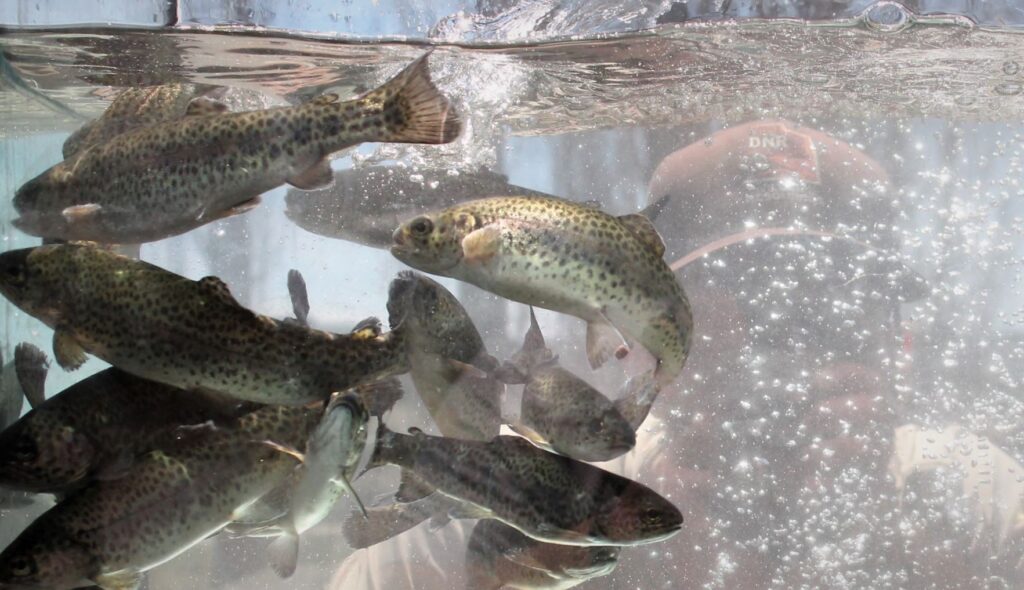Caleb Campbell a fish culturist at the Logan Fish Hatchery examines some rainbow trout on Friday. The trout are part of the inventory to be stocked in area reservoirs.
LOGAN – As the drought continues and water levels in Cache Valley’s major trout streams drop, the future of Utah’s most popular game fish seems to be uncertain this year. Droughts mean less water in the waterways and it may spell trouble for trout populations

Division of Wildlife Resources Logan Fish Hatchery manager Gary Howes said they are monitoring the drought situation and will make appropriate changes as needed.
“We found out the US Forest Service is closing Tony Grove for a while so we will stock there before they close it and some after they open again,” he said. “We can rework our fish planting schedule when we need to. We like to keep fish in all the places where people can catch them.”
Frank P. Howe, Ph.D. University Research Liaison, Division of Wildlife Resources, also worries low water levels may cause harm to trout populations.
“I’d say the biggest concerns from an ecological perspective are that low water levels could impact the trout populations in the lower Logan and Blacksmith Fork,” he said. “In fact, it’s very possible that the Blacksmith and portions of the Logan might run dry this year.”

If sections of the rivers run dry it will be tough on the fish and all the other river wildlife. For trout – a cold-water fish – the problem starts as water levels drop and the temperature of the water warms up.
“When there’s less water in the river, obviously the river is shallower, and shallow water heats faster than deep water,” Howe said. “Warm water holds less oxygen than cold water, and so trout have a harder time breathing in warm water. Then, as water levels continue to drop, fish get stranded in isolated pools which continue to shrink and get warmer.”
Even if the rivers don’t dry out entirely, there still could be major trout loss.
Bethany Neilson, Ph.D., professor in Civil and Environmental Engineering at Utah State University, leads the Logan River Observatory. They study, among other things, the stream flows in the valley’s rivers. She agrees with Howe on the effects of water temperatures on trout.
“When you have low flows and high temperatures, the water holds less oxygen and it is a double whammy for the fish,” she said “ You need water and it must be cool enough to maintain fish populations.”
She also said limited runoff generally means lower summer flow. This is pretty concerning because flows may be low for a longer period and it is likely that the Logan and Blacksmith will be dry in some locations in the valleys. This is due to diversions removing large amounts of flow from the river.

At times, diversions can remove all of the flow in the river. When this happens there are historical accounts of people finding pools with trapped trout due to no stream flow. They try to save them by capturing them and moving them to different locations.
“The limited runoff this spring is pretty concerning. There is a high probability that channels will dry and the fish populations could be significantly impacted this year.”

